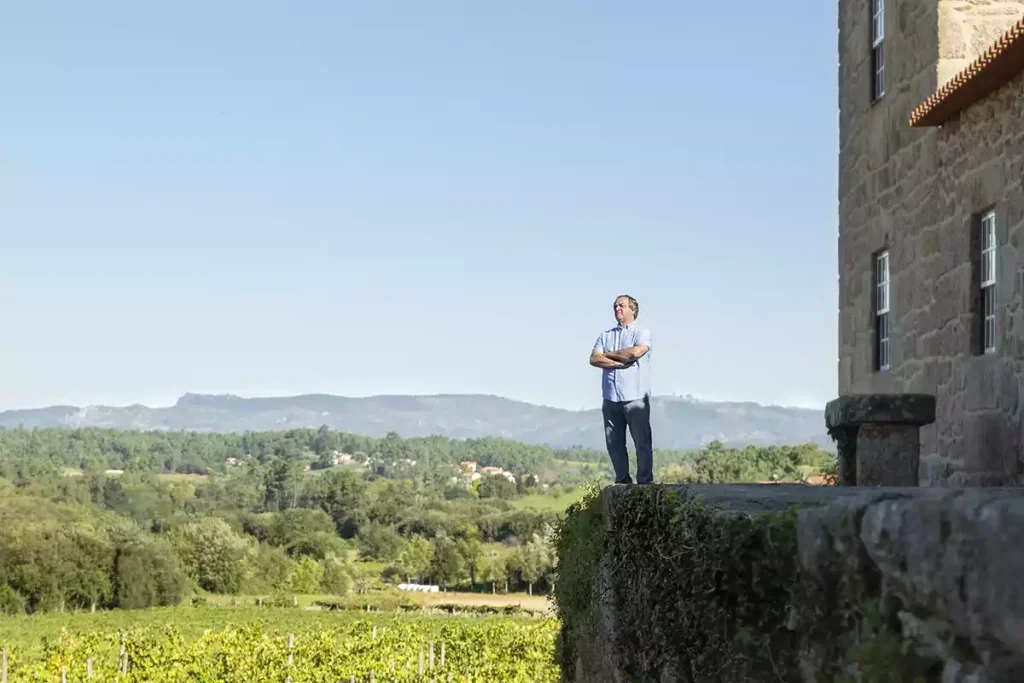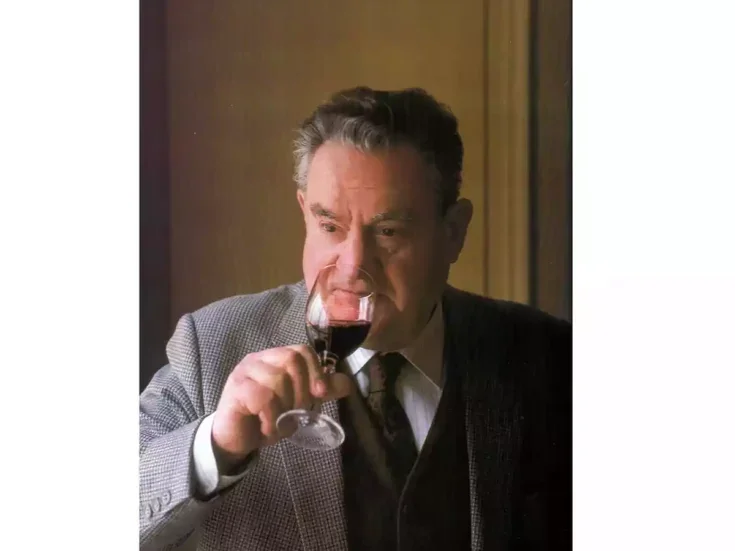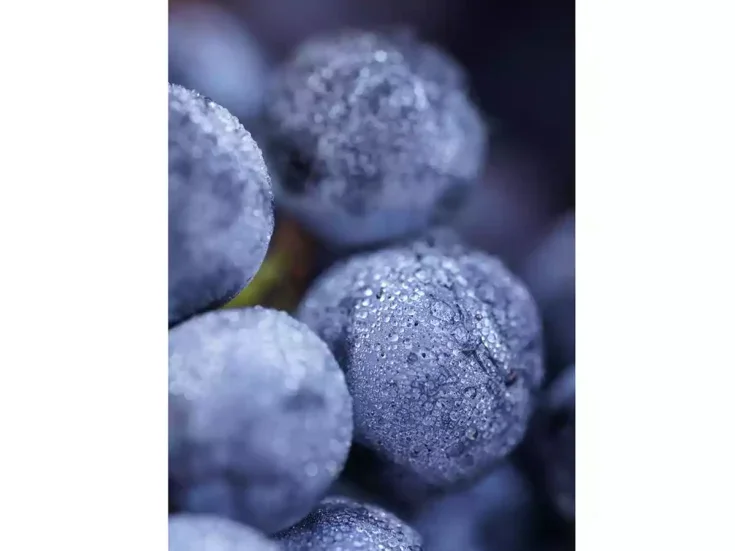
To claim that the time is ripe to discover Vinho Verde may sound oxymoronic. The name of Portugal’s northwesternmost DOC—its highest rainfall region—has been inextricably linked with the concept of wine (vinho) that is green (verde), in the sense of unripe. Then there is the stereotype born of 80% of Vinho Verde DOC’s production revolving around so-called “classic” white commodity wines, distinguished by low alcohol, added gas, and residual sugar. Let me challenge those misconceptions from the off. Vinho Verde produces some of Portugal’s finest white wines and fashionably light reds. There. I said it. Now let me tell you why.
The finest wines of Vinho Verde
A region, not a wine
True to its name, Vinho Verde is a verdant region, characterized by numerous smallholdings, whose high-trained vines traditionally formed the borders surrounding fields or covered pergolas shading drives and walkways. Fertile soils privileged cereal over grapes, pushing vine-growing to the perimeters. “In the past, most of our best plots used to grow corn,” observed João Camizão Rocha of Sem Igual in Sousa, whose hunch that the family vineyards “were maybe a diamond to be polished” was right. High-trained hence high-yielding, these traditional bordadura and ramada vines forged Vinho Verde’s reputation for low-alcohol, high-acid wines, a good deal of which was made for domestic and home consumption. They still dot the landscape and can be seen from the A3 motorway on the journey from Oporto to the Portugal–Spain border on the Minho River, which bounds Vinho Verde to the north.
Running parallel to the Atlantic Ocean, which forms Vinho Verde’s western border, this 75-mile (120km) motorway stretch traverses river valleys that function as conduits for the ocean’s cool, humid fogs and breezes. Inland, the maritime influence progressively diminishes, especially ascending into the amphitheater of Vinho Verde’s eastern reaches, whose mountains cast the rain shadows that account for the neighboring Douro and Trás-os-Montes regions’ focus on Port and red winemaking. To the south, Vinho Verde abuts Bairrada and Dão. Like Dão, Vinho Verde has predominantly granitic, well-drained soil, which is a blessing given its high rainfall. Two bands of schist offer a point of difference.
Given the latent potential of this large region’s diverse microclimates and 45-strong varietal range, Vinho Verde DOC was ripe for a makeover come the Portuguese wine industry’s technological revolution, which began in the 1970s and ’80s. This period saw investment in modern cordon and vertical shoot positioning (VSP) training systems—continuous vineyards—putting vines front and center (rather than on the polycultural periphery), and grape-growing on a professional footing. “When we changed from ramadas, when we were able to plant in the fields, we could do everything well for the production of dry wines, deciding where to plant, which varieties to plant, and using a cordon, now VSP” said António Vinagre of Quinta do Tamariz, a pioneering quality-focused producer in Cávado.
Breaking out from the burden of tradition
Modern wineries with pneumatic presses and temperature-controlled stainless-steel fermentation vats underpinned Vinho Verde’s swift transition from red, to predominantly white, wine production. Plowing a different furrow, however, from the low-alcohol, high-acid wines that have come to define Vinho Verde has proved less easy. Vinagre admitted, “35 years ago, when we decided to stop with gas and make dry wines, nobody wanted Vinho Verde without gas.” Summing up the situation back then, Anselmo Mendes explained, “[T]he region continued to innovate in enological and viticultural technology, but always with the burden of tradition, comparable to a speed limiter.”1
Not so for the winemaker affectionately known as Senhor Alvarinho, who has been one of the leading catalysts of change in Vinho Verde. Mendes and like-minded pioneers, such as the Cerdeira family (Soalheiro), Quinta do Ameal (founded by Pedro Araújo), and Vasco Croft (Aphros), have worked tirelessly over the past 20 to 30 years to showcase another side of Vinho Verde. It is a mark of the ambition and focus being attached to grape-growing that, in a high-rainfall region, their number includes pioneers of organic and biodynamic viticulture in Portugal (Quinta da Palmirinha, Aphros, Soalheiro, Covela, and A & D Wines).
Dispensing with the crutches of gas and residual sugar, new-wave Vinho Verde producers favor lower yields and balanced maturations for naturally balanced dry wines with no gas. For the most part, top wines are made by growers-turned-vignerons or winemaker-led projects making varietal and/or single sub-region wines. In stark contrast, grapes for big-brand, classic Vinho Verdes, such as Casal Garcia (Aveleda) and Gazela (Sogrape), are sourced widely, since blending varieties and vintages has been the basis for volume, consistency, and commercial success.
Monção e Melgaço: Critical mass, critical success
Happily for him, Mendes was born in Monção, where the perfect conditions prevail to pursue new-wave Vinho Verde while, in the hillier east, the Cerdeira family planted the first continuous Alvarinho vineyard in 1974 in neighboring Melgaço. Together, these municipalities form Monção e Melgaço, one of nine sub-regions in Vinho Verde; it accounts for 1,821ha (4,500 acres) of Vinho Verde DOC’s total vineyard area of 17,000ha (42,000 acres). Home to 59% (1,521ha [3,758 acres]) of Vinho Verde DOC’s total Alvarinho plantings, it has paved Vinho Verde’s path to critical success championing the white grape variety known as Albariño in Rías Baixas across the border in Spain.
Tucked inland in Vinho Verde’s mountainous northeastern pocket, the sub-region enjoys a privileged location thanks to the unusual presence of western ranges, which provide a degree of shelter from Atlantic influence. With a judicious confluence of maritime and continental conditions, Monção e Melgaço’s summers are hotter and drier. By reason of its fretwork of rivers and elevated climes to the east, however, nights are cool, allowing Alvarinho consistently to ripen fully while maintaining Vinho Verde’s hallmark fresh acidity and aromatic intensity. Compared with most Rías Baixas (which comes from the Atlantic-facing sub-region of Val do Salnes), Luis Cerdeira observed, “Our terroir produces more fruity and fresh wines.” And it can do, and does, so much more.

Scaling Alvarinho’s heights
Since Soalheiro launched its first Alvarinho in 1982 and Mendes founded his eponymous label in 1998, Monção e Melgaço has attained a solid critical mass of 60 Alvarinho specialists with a sophisticated understanding of their grape and terroir. Their burgeoning ranges (and my tasting notes) reflect the nuances of aspect, elevation, and soil type since, as Miguel Queimado (Vale das Ares) puts it, “I have one grape. If I want different styles, I need to individuate,” which he prefers to do in the vineyard. His freshest, most structured, top-tier (oaked) wine comes from a north-facing vineyard, while his entry-level Alvarinho is mostly sourced from a lower, west-facing site that produces fruitier, higher alcohol wines.
With 15ha (37 acres) of estate vines and a patchwork of around 180 growers working 80ha (200 acres), Soalheiro has the biggest range of all. Zooming in on soils, Cerdeira (who made the wines for 30 years before establishing his own project in 2024 with his son) contrasts the valley vineyards (below 200m [650ft]) with those on mountain slopes at 200–400m (650–1,300ft). He explained that because the valleys tend to have more fertile soil with more organic matter, their increased nitrogen levels are rich in the precursors that produce aromatic wines. In contrast, elevated sites with stonier, poorer soils tend to a more reductive, restrained, mineral profile, with marked salinity. Naturally, higher sites retain more acidity and, pushing the boundaries, Soalheiro has planted a new vineyard at 1,100m (3,600ft) on schist which, observes Queimado, is less susceptible to hydric stress than granite. His new highest vineyard at 300m (1,000ft) is also on schist.
Alvarinho every which way
Alvarinho is made in a range of styles in Monção e Melgaço—still, espumante (aka traditional-method fizz), and sweet. Within each style, diverse profiles reflect this classy grape’s versatility. Vinification occurs in stainless steel, cement, concrete, clay, or wood, be that French oak or Portuguese chestnut. Wines might be naturally fermented and, if labeled curtimenta, fermented on skins, which, says Mendes, enhances structure as well as the variety’s floral fragrance: “It makes perfect sense, when Alvarinho is high in polyphenols,” he adds (because of its high skin and seed to juice ratio). Aging on lees, with or without bâtonnage, is now common, as is the use of oak for top cuvées which, these days, is much more sympathetic to grape and terroir. Malolactic fermentation is uncommon but is creeping into earlier picked styles to enhance mouthfeel and texture, balancing the higher acidity. Continuing to push the envelope, Márcio Lopes, a protégé of Mendes, describes Pequenos Rebentos Viagem Ao Principio do Mundo Alvarinho as “perhaps the most challenging wine we have ever made.” It is fermented on skins for a month, then aged in a Sherry barrel under flor. Reflecting the different mindset of a new generation of winemakers, he is proud to say,“We make wines to open markets, not answer to the market.”
With creative juices at full spate in Monção e Melgaço, the extraordinary diversity of Alvarinho wines is the mirror opposite of Vinho Verde’s cookie-cutter volume brands. So, too, is their age-worthiness and gastronomic potential. Rich in polyphenols, Alvarinho has high resistance to oxidation. Even entry-level Alvarinho from Monção e Melgaço ages well; the best gain in complexity and texture for a decade or two. Pronouncing himself to be “sad” to have sold out of Gran Vicious Alvarinho 2020 (a one-off limited edition priced at €275/bottle retail), Emanuel Pesqueira (Group Head of Wine for Gordon Ramsay) reckons it would have evolved beautifully, like an old Nikolaihof Grüner Veltliner from Wachau.
Lima: Loureiro land
Though located just south of Monção e Melgaço, the Lima sub-region’s terroir is very different, because its low-lying vineyards stretch all the way from the Atlantic, to the mountainous eastern border with Trás-os-Montes. Horizontally bisected by the River Lima, the Atlantic influence is emphatic here, which perhaps explains why the sub-region has Vinho Verde’s highest rainfall levels. Despite this and Loureiro’s high productivity, in the right conditions, it can scale the heights of Monção e Melgaço’s finest Alvarinhos, while retaining a delicacy that Croft captures beautifully, describing Loureiro as “filigree.” It is just a shame that Lima does not share Monção e Melgaço’s critical mass of ambitious producers.
No-one had as much as grazed the quality potential of Loureiro when Pedro Araújo first produced Quinta do Ameal Loureiro in 1999. Elegantly structured, precise, and mineral, the wines that he made with consultancy from Mendes aged brilliantly. At a vertical tasting in 2021, the entry-point 2003 Loureiro’s exotic florals and tertiary spice put me in mind of a fine, mature Gewurztraminer from Alsace. True to Vinho Verde, however, it retained lovely energy and tension, thanks to its backbone of acidity. According to Mendes, “Although Loureiro has more fragrance, and Alvarinho has more structure, Loureiro’s acidity is more vibrant, so the capacity to age in bottle is the same—up to 25 years.” Elaborating on the point, Lopes observes, “Loureiro can have 12% alcohol with a pH under 3.”
Balancing this acidity requires the fruit to be picked at ripeness—hence Araújo’s draconian canopy- and yield-management regime. Moreover, Ameal is in a sweet spot according to José Luis Moreira da Silva, who took over winemaking in 2019 when the Roquette family (pioneers of Esporão’s new-wave Alentejo wines) acquired Ameal. Located 30km (18 miles) from the Atlantic, to the east of Ponte de Lima, the ocean’s influence is apparent in the acidity of the wines but, since Ponte de Lima is already continental (resulting in warmer days and colder nights), they are balanced, said the winemaker, “because you can attain full maturation and ripeness.” It also helps, he added, that Ameal is located on the Lima River’s sunnier, south-facing bank.
Fine-tuning Louriero
Ameal has divided the estate into six plots, based on two different soil types, with transitional soils in between. By the River Lima, relatively fine-textured fertile alluvial soils over clay retain humidity and water best. These parcels produce the exuberantly fresh, aromatic entry-point Loureiro. Just 30m (100ft) higher, there is no clay, and the sandy loam is coarser, with harder colluvial material (quartz, mica, feldspar). Well-drained, less fertile, these vines produce lower yields of concentrated wines with more body and structure for the oaked Escolha. Ameal Solo Único hails from a transitional plot that produces intense wines with marked freshness.
Aphros is also located east of Ponte de Lima. Here, Vasco Croft has pushed the boundaries of viticulture and winemaking the furthest, cultivating his vineyards biodynamically and making minimal intervention wines. Aphros’s Phaunus label is made in his “medieval cellar” where, with no electricity, everything is done manually. “It was a huge difficulty moving the wall of prejudice created by the wine culture in my place,” said Croft who, like many peers, inherited a farm that was selling grapes to the co-operatives and negociants at unsustainable prices. A darling of the natural-wine scene, he observed, “I was a UFO arriving with fresh eyes and the freedom to make mistakes. Not in my wildest dreams could I have imagined starting all this interest.” As exciting as it is eclectic, Aphros’s range encompasses unoaked Loureiro, Loureiro made with pre-fermentation and post-fermentation skin contact, in chestnut and oak barrels, in clay, sparkling, still, and orange. From a design background, Croft explained, “I think of a chair, how can it be, creating versions around the same idea… My default Loureiro has brightness and freshness and youthful energy, but you can tune it up and down like a melody—let’s hear the flute and the saxophone—the pitch can be higher or lower.”
Hyper-selective winemaker-led micro-negociants have found sweet spots elsewhere. Lopes’s mineral, old-vine Loureiro comes from a vineyard well south of Ponte de Lima, in Braga. Off-dry, floral, and mineral, with more than a hint of German Riesling about it, Portugal Boutique Winery Gorro showcases the relatively cool, humid conditions west of Ponte de Lima, just 5km (3 miles) from the ocean. Here, site selection is key and, explained Ricardo Sarrazola, blending two Loureiro vineyards “held the key to having the crisp and zesty notes typical of pebbly soils and the more structured, complex palate from rare schist/clay slopes.”
Next wave
In Baião next door to the Douro, where Covela and A & D have made the running, warm, dry conditions ensure that its varietal star, Avesso, ripens to full maturity while retaining excellent acidity. Other sub-regions have yet to surf the varietal/sub-regional wave of success or identify a USP. Not that varietal/single sub-region wines are the be all and end all. At £100/bottle, World Wild Wines Imperfeito 2018 is a high-end case in point. Sourced with scalpel-like precision from more than ten different vineyards averaging 45 years old, mostly located in Baião, Carlos Raposo blended Avesso (for body and a touch of bitterness), Loureiro (for complex aromatics), and Arinto (for freshness and line). The winemaker took just 500kg (1,100lb), or 300kg (660lb), or even less, from some vineyards. “I taste, taste, taste different blocks—it’s all about blending—salt and pepper,” said Dirk Niepoort’s former right-hand man, who took Domaine Raveneau Chablis as his inspiration.
As a rule of thumb, vineyards in the eastern reaches (meaning the entirety of Basto, Amarante, and parts of Cávado and Ave) can produce riper wine styles with more structure, body, and intensity because of a degree of continentality, poorer soils, and, sometimes, elevation. Mendes believes that Arinto, Azal, and Alvarinho in the Basto and Amarante sub-regions have great potential. With pockets of ambition scattered across Vinho Verde DOC, there is a solid (and fast-growing) rump of high-quality wines. Reflecting space constraints, my tasting notes are squarely focused on the most accomplished wines, which are predominantly from Monção e Melgaço, followed by Lima.
Red alert
For the most part, whites have been the focus of ambition, but growing interest in light reds has sparked a niche comeback for red Vinho Verde. Croft has led the quality-focused revival. “Instead of the traditional, rustic, harsh profiles, we look for elegance and levity,” he said. Having started out with Vinhão, whose dark, sometimes wild, high-acid, high-tannin profile he describes as “more irreverent and intense,” his eye has been caught more recently by Alvarelhão: “supremely light and ethereal.” A low-extraction, whole-bunch fermentation and post-fermentation maceration contributes to Aphros’s Ouranus’s Pinot Noir-esque notes. Croft has planted more, and, at Quinta de Santiago, Joana Santiago has replaced all her red grape varieties with Alvarelhão.
In Monção e Melgaço, young guns Lopes and Constantino Ramos, another protégé of Mendes, have seized on old field-blend vineyards to produce fragrant, mineral, light reds or, in the case of Juca from a centennial vineyard at 400m (1,300ft), Ramos’ brooding, inky unoaked red. Researching the category, the winemaker discovered that the sub-region had a distinguished history for red winemaking. According to Charles Sellers, “[I]t was, however, from Vianna do Castello that the first shipments of Portugal red wines were made, when a company existed at Monção (the Vinho Verde sub-region of Monção e Melgaço) for regulating the exportation. The wines of Monção and Vianna [in Lima] are, when judiciously treated, very similar to those of Burgundy.”2

Highly investible
Today, Portuguese white wines attract acclaim worldwide, thanks in no small measure to Vinho Verde’s pioneering top wines. Their longevity, complexity, and finesse has confounded regional stereotypes and inspired others to follow suit, resulting in major investment. The impetus behind Alvarinho, in particular, has quickened since 2021, when varietal Alvarinhos from any Vinho Verde sub-region (and not just Monção e Melgaço) can be labeled DOC Vinho Verde (before, it could only be labelled Minho VR).
It is a measure of Vinho Verde’s growing cachet that big-brand Vinho Verde owners Aveleda and Sogrape now make high-end Vinho Verde from varietal Alvarinho and Loureiro. They also blend the two varieties for flagship wines made from their own vineyards in Cávado, as well as Aveleda’s new vineyard north of Ponte de Lima. Rare parcels of Alvarinho on schist have impressed the winemakers. From a viticultural perspective, although Quinta de Azvedo is located just 20km (12 miles) from the ocean, Diogo Sepúlveda observed, “We can get riper fruit because schist soils are warmer, so we start picking Alvarinho at the end of August.” Diogo Campilo (Aveleda) describes schist-grown Alvarinho as “austere with very good aging potential,” on account of its acidity, and remarks, “it is so mineral, citrus, and elegant.”
Hot on the heels of Esporão’s acquisition of Ameal, other big hitters from outside Vinho Verde have followed, including two famous Port producers. In 2022, the Symington family acquired an estate in Monção and formed a partnership with Mendes. The Fladgate Partnership acquired the ultra-ambitious portfolio of Ideal Drinks in 2023, whose built-to-age, top-tier Vinho Verdes come from Quinta da Pedra and Quinta de Milagres (Monção Alvarinhos) and Paço de Palmeira (Loureiro from the Cávado sub-region).
Optimistic about the transformation of Vinho Verde, Mendes believes the region is well-placed to benefit from climate change, especially when classic regions like Burgundy may be pricing themselves out of the market. He observed, “New producers, winemakers, and viticulturists know what they want—they’re very focused—and the Symingtons, Esporão, and other big companies are very important for the development of the region and our next step, increasing Vinho Verde’s profile and distribution.” While there is hot debate about whether the region should introduce new labels or regulations to differentiate premium wines from classic Vinho Verde, there is now no room for debate about Vinho Verde’s ability to produce wines of world-class quality and finesse.
Notes
1. Amândio Jorge Morais Barros and Nuno Pizarro de C Magalhães, Francisco Girão 1904–1973: An Innovator in Vitiviniculture in the North of Portugal 2 vols (Fundação Francisco Girão; 2011), Vol.2, p.88.
2. Charles Sellers, Oporto, Old & New: Being a Historical Record of the Port Wine Trade and Tribute to British Commercial Enterprize in the North of Portugal (Herbert E Harper; London, 1899), p.19.






